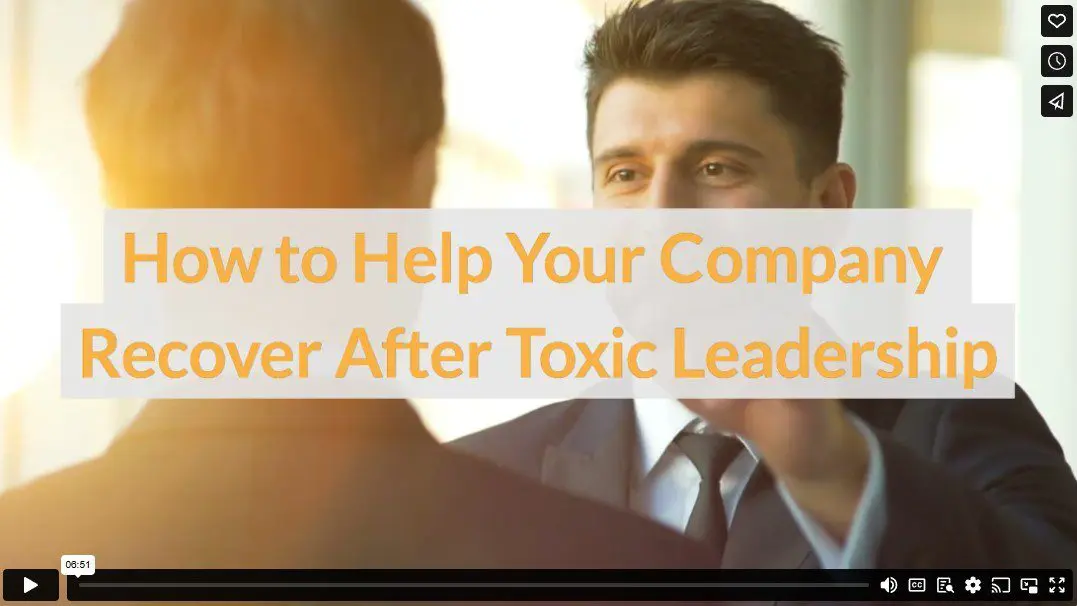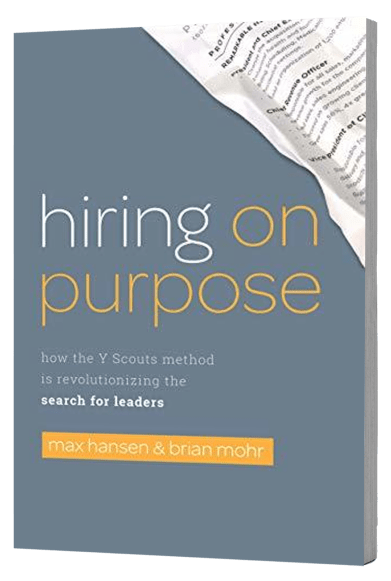Want to take down an organization? Smother it in toxic leadership. Toxic leadership suffocates your greatest resource for future success: your people.
If your organization has been affected by toxic leadership, there’s hope. In this article, you’ll get tips from our leading C-suite recruiters to guide you through a 5-step cycle to get things back on track. By using these steps to realign the behaviors, conversations, and mindsets throughout your organization, you can transform dysfunction into a culture of thriving.

Table of Contents
ToggleStep 1: Dive Deep into the Toxicity
We get it. You want to run away from the muck, not swim in it. But the first stage of the realignment cycle is to dive deep into the current dysfunction within your organization. No problem can be addressed until it is clearly and specifically identified.
Start by describing what toxic leadership is. Some people may be so close to the problem, they’re not seeing it clearly. Then, ask questions with genuine curiosity.
- What short-term and long-term goals are guiding your organization
- How are people punished for or rewarded within your organization?
- Have you been given opportunities for professional development?
- Have you been given clear expectations for doing your job?
- How do your leaders follow up with you on assigned tasks?
- Do you have any activities or meetings to strengthen company culture?
- If a leader is not happy with your work, how do they handle it?
- Do you feel like your work-life balance is respected/valued?
Focus on learning from personnel and observing the true state of leadership in your organization. Look employees in the eye and listen actively. Remember that employees may find it painful and frightening to delve into the dysfunction, especially if they fear that their position or reputation is at risk. Reassure these employees that they will not face retribution for feedback, and postpone any disciplinary action or major structural changes until you have thoroughly investigated the toxic leadership.
Establish clear routines and expectations for communication. Let people know what to expect from your meetings and how you’ll be soliciting feedback. Share how feedback will be used to create a better environment—one that replaces dysfunction and mistrust with transparent and responsive leadership aligned to the needs of your personnel. Sincerely thank your employees for their feedback. If face-to-face contact feels too intimidating for some employees, consider using anonymous surveys to gather feedback.
Step 2: Accept Responsibility
After identifying toxic leadership, the next stage is sincerely accepting responsibility and embracing the opportunity to change. You can do this even if you weren’t directly involved in the toxic leadership. People need to know that you, as a company leader, value their input and are willing to make changes—not excuses.
Communicate with your organization about the feedback from stage one in thoughtful and accountable ways. Excusing toxic behavior, blaming others for the problems, or denying people’s experiences or feelings will undermine your organization’s recovery.
If individuals in the company have contributed to the toxicity, be prepared to hold them accountable. Maybe they are unwitting offenders and need training, or maybe they need disciplinary action. Show that you’re willing to make necessary changes—even if they’re uncomfortable—to get your organization back on track.
Step 3: Think Ahead for Aligned Leadership
Here’s where you may need to make some hard decisions about which leaders will be able to align with your company’s purpose and values. Think about what your company values the most. Think about what style of communication you want to promote. Are there other companies that embody a culture that you want to emulate? Think about your goals. Where do you want to be in one year? In five?
Which leaders are going to get you where you want to go? If you need to look for new leadership, consider contacting a retained executive search firm that will help you find candidates who will align with your culture and goals.
Step 4: Human-oriented Action Plan
Once you’ve established the leadership circles that will take you where you want to go, it’s time to make a plan. Circle up and nail down the steps to get you there. Start with a significant and attainable goal, one that addresses specific dysfunction and clearly aligns with your values. Use feedback from the first step. Show your people this leadership team is responsive to their needs.
Take it slow. Too many changes at one time is like using a flamethrower to light a candle: it’s likely to blow up in your face. Build on the expectations, routines, and policies you established in early steps and play to your company’s strengths. Plan regular meetings and updates to evaluate progress, and wait to make more changes until your company is comfortable with the first ones.
Even the best plan will fail without accounting for human needs. Your company needs time and support to build a culture of thriving. Train your leaders on growth mindsets, healthy communication, and relationship building. Clearly communicate how toxic leadership will be handled going forward.
Plan time for leaders to respond to and support employees as they continue to adjust. Treating your organization as people with real human needs will align your action plan to the culture of thriving you want to reach.
Step 5: Follow Through
Now is the time to act. Prove to your leadership and your employees that your plan was not just talk. Patiently and consistently following your action plan will rebuild trust and boost confidence in leadership.
Continue to communicate and solicit feedback. Plans to address dysfunction may fail or create new issues. Your leadership circle may struggle to adapt to the new culture. Don’t leave your employees in the dark. Clear communication about progress and failure during this step will prove your commitment to the recovery process.
While following your plan, empower your employees to work through challenges. Continue training leaders in relevant skills. Invest in activities and meetings to strengthen company culture. Follow through on feedback. Take every opportunity to replace dysfunction with habits of thriving.
Conclusion
After step five, will you have the company culture of your dreams? We wish it could be that quick. Recovery from toxicity takes time. Realigning your leadership moves through the five-step cycle many times. You will evaluate the challenges faced during the action plan and start another deep dive into the continued dysfunction.
Don’t get discouraged—celebrate the progress with every step, every cycle. You will see your company become stronger and healthier until you’ve stamped out toxicity and you have a thriving team ready to take your organization to new heights.
Video

Infographic
Recovering from toxic leadership requires intentional effort and honest reflection. By following a structured five-phase approach, your organization can move from dysfunction to resilience. Learn more in this infographic.




